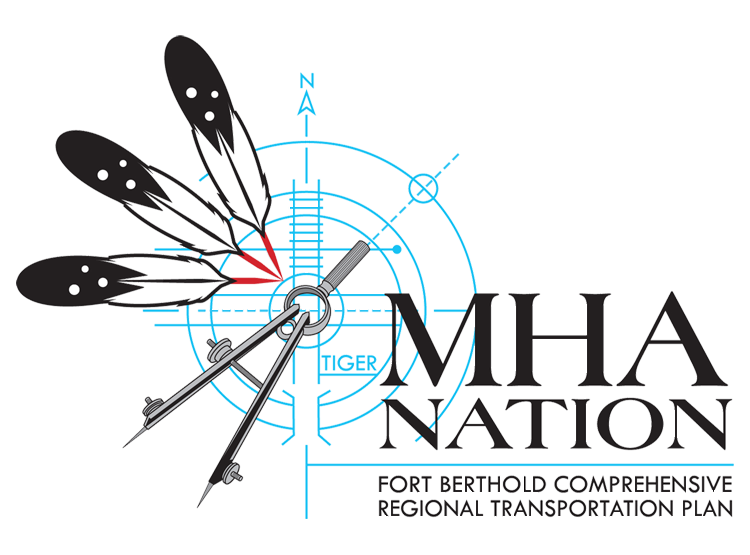RAIL PLAN
Railroads have a long and entrenched history in the United States. They are capable of efficiently moving massive amounts of cargo and account for one third of all U.S. exports. North Dakota currently has 8 operating freight railroads on a total of 3,330 freight rail miles. Not only can one train can carry as much freight as several hundred trucks, trains are 4x more fuel efficient and produce 75% less greenhouse gas emissions.1

Railway Plan
What is a Rail plan?
A rail plan takes inventory of all rail systems, services and facilities, assesses the ability to connect to the rail system through other modes of transportation, considers the economic and environmental impacts of rail, assesses the existing freight and passenger services, potential financing options, and determines a long-range investment program and project list for rail development. It also describes the legal and regulatory climate in which railroads operate.
This rail plan will provide Tribal Leaders and community members with a resource document to help understand the operations and economics of rail service in North Dakota and Fort Berthold.
Why is Rail Planning Important?

Road Safety.
The Fort Berthold roads were designed to rural agricultural standards; most roads are unpaved and the large number of semi trucks carrying heavy loads on them not only deteriorates the road condition, but poses a significant safety concern for residents. By considering alternatives to the estimated 7500 oil trucks on Fort Berthold roads a day, we can take action to improve community road safety.2

Environmental Protection.
Utilizing rail can lead to a much more environmentally sustainable approach to transportation when compared with the vast amount of transport truck traffic currently operating on Fort Berthold roads. According to the Association of American Railroads, trains are 4x more fuel efficient than semi trucks and produce 75% less greenhouse gas emissions, both important factors in reducing the impacts of Climate Change.3

Reduce Transport Costs.
Using rail to transport large quantities of oil that would normally have been carried by trucks could decrease transport costs. Rail transport is 4x more fuel efficient than semi trucks.1 In addition, having a rail plan makes MHA Nation more competitive for state or federal funding.
Connect People and Businesses.
Rail (passenger or transport) has the opportunity to put more people and businesses in closer connection to each other. According to the State of Arizona, “Economists show industries benefit in many ways from locating near other similar businesses which is envisioned to surround freight rail logistic centers or transit nodes.”5
Reduce Emissions.
In 2013, on average, trains produced 75% less greenhouse gas emissions, and 3x less nitrogen oxides and particulates than semi trucks1. “If only 10 percent of the freight that moves by truck moved by rail instead, fuel savings would exceed 800 million gallons per year and annual greenhouse gas emissions would fall by more than 9 million tons — equivalent to taking around 1.8 million cars off the road or planting 215 million trees.”
Transport Efficiency.
In 2013, on average, trains moved a ton of freight 473 miles on one gallon of fuel.1 According to the 2011 Arizona rail plan, a 100 car containerized rail unit is equivalent in freight load to nearly 385 freight trucks. Rail can decrease maintenance costs on roads and the pressure to build costly new ones.
What would YOU like to see addressed in the Rail Plan?
Enter your full name, a valid email address, and a detailed message in the forms just below to tell us what YOU would like to see in the Rail Plan. What else would you like to know about it? We also want your stories and perspectives on the questions framing this project; How did we end up with the rail infrastructure that we currently have? Where is it today? Where do we want it to be in 20 years?
Also, be sure to follow our blog, Facebook, Instagram, Twitter, Google+ and Linkedin!
Resources




